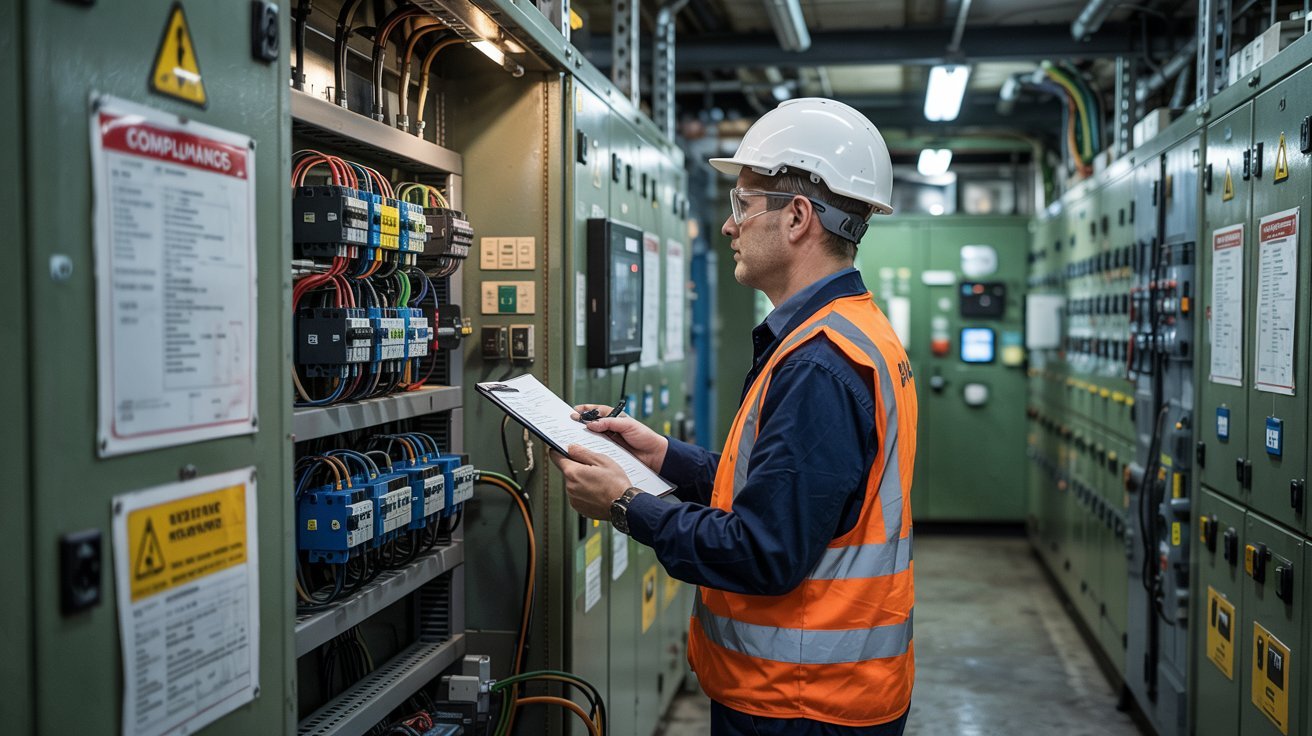
Maintaining electrical compliance in industrial facilities is not just about ticking boxes. It’s a critical investment in safety, operational efficiency, and legal adherence. Industrial operations are often powered by complex electrical systems, and ensuring these systems meet regulatory standards is key to safeguarding workers, equipment, and business continuity.
This guide will walk you through the essential electrical compliance requirements for industrial facilities, from understanding regulatory standards to implementing effective maintenance strategies. By the end, you'll have actionable insights to strengthen your facility's electrical safety framework.
Industrial facilities are high-risk environments where failure to comply with electrical standards can lead to devastating outcomes.
Here's why compliance is non-negotiable:
When compliance is prioritized, an industrial facility ensures not just legal and operational security but contributes to a culture of safety and excellence.
Compliance starts with understanding and implementing local, national, and international standards. Here are some primary regulations and codes to know:
The NEC, also known as NFPA 70, is a widely adopted standard in the United States. It outlines requirements for installing, maintaining, and inspecting electrical systems.
Key points of the NEC include:
The Occupational Safety and Health Administration (OSHA) enforces electrical safety under its general industry standards (29 CFR 1910). OSHA ensures facilities utilize safe practices for electrical installations, equipment, and employee training. Violations can result in significant fines.
Important OSHA Guidelines to Follow:
For global operations, standards like the IEC 60364 (developed by the International Electrotechnical Commission) govern electrical installations worldwide. Facilities depending on international trade often adhere to multiple standards depending on jurisdiction.
Municipal and state codes often supplement national guidelines. It’s crucial to check local requirements specific to your area and facility type.
Electrical compliance may seem like a daunting task, but breaking it into specific components helps ensure your facility's systems remain high-functioning and safe.
Grounding provides a safe path for electricity in the event of a fault, protecting people and equipment. Key requirements include:
Industrial facilities often rely on equipment with significant electrical demands. Balanced loads prevent overheating, uneven wear, and short circuits. Compliance involves:
Certain industrial facilities, like chemical plants or grain mills, operate in environments with explosion risks. Compliance for hazardous areas includes:
Properly labeled panels, circuits, and components reduce confusion and ensure technicians can quickly identify issues. Regulatory bodies like OSHA emphasize comprehensive documentation and labeling for all electrical systems.
Even with compliant systems, untrained or uncertified personnel handling equipment can nullify safety efforts. Compliance standards often require:
Compliance doesn’t end after installation. Regular inspections catch potential problems and ensure systems remain up-to-date with changing standards.
Here’s a step-by-step approach to ensuring your facility meets electrical compliance requirements:
Hire a qualified inspector to assess your current electrical systems. The audit should identify existing violations, gaps, or areas of concern.
Create a roadmap based on the findings of the audit. If deficiencies are found, set clear timelines and assign responsibilities to rectify them.
Partner only with certified electricians, engineers, and compliance officers to install, maintain, or upgrade systems.
Ensure all employees understand basic electrical safety protocols. Conduct specialized training for maintenance staff and managers.
Set up an annual maintenance and inspection schedule. Proactive detection of issues reduces future costs and risks.
Leverage modern tools like infrared thermography, power quality analyzers, and compliance management software to stay ahead of potential violations.
No compliance program is effective without a change in culture. Foster a safety-first mindset within the workplace by:
When management demonstrates a serious commitment to worker safety and electrical compliance, the culture can shift toward proactive risk mitigation rather than reactive fixes.
Electrical compliance is more than a mandatory process; it’s a competitive advantage. Facilities that prioritize compliance not only reduce risks but gain an edge by:
Ensuring electrical compliance requires a multi-faceted approach, blending technical expertise, organizational commitment, and ongoing education. Industrial facility managers who take proactive steps toward compliance unlock long-term safety and operational efficiency gains.
If you’re unsure where to start, consult with licensed electrical engineers or compliance officers to audit your current systems. Staying informed and ahead of regulatory changes will ultimately save you time, money, and stress.
Don’t wait until non-compliance leads to penalties or accidents. Start building a safer, more compliant facility now.